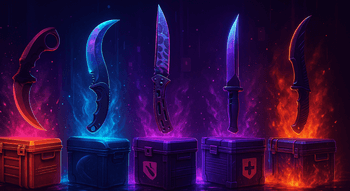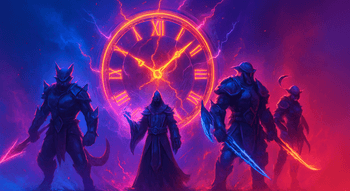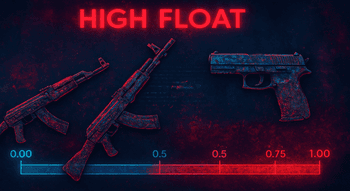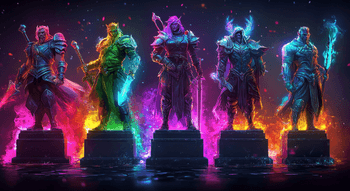Dota 2 Ranking System
Contents
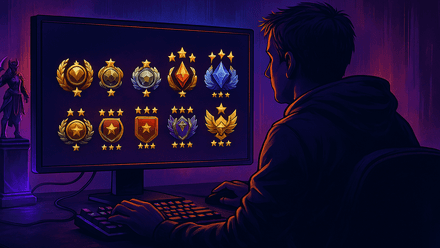
In today's guide, we are going to talk about the state of the ranking system in Dota 2, its main features, current rank distribution, and everything else you need to know before starting the new competitive season. We also included some tips on how you can quickly improve your rank to help newcomers better understand how the system works. Let’s get going so you can progress through the Dota 2 ranks faster!
What Are Ranks in Dota 2?
Simply put, the Dota 2 ranking system works like this: each player gets a numerical rating corresponding to their in-game performance, which is then used to pair them with similarly skilled opponents. This feature is called MMR (matchmaking rating) and was added to the game in 2013.
How Ranks Affect Matchmaking
With this ranking system, Dota games feel decently balanced most of the time. Although there are other factors like behavior, hours played, etc., that all impact what kind of opponents a player can expect to face, their rank is far more important in most cases. This also means that games in different ranks feel and play differently. For example, you can usually tell a higher-level lobby from a beginners’ match just by listening to the in-game communications (or the utter lack thereof).
The Ranking System in Dota 2
Dota 2 ranking is pretty much what you’d expect from an online game. That is, your exact rank is a number from 1 to 8,000+. Depending on that number, you will be placed into 1 of the 8 main ranks, which will then be promptly displayed in your profile. Seven of those ranks are further divided into 5 tiers to improve matchmaking. And that's basically it.
Now, let’s check how ranks correlate with MMR numbers.
Breakdown of Ranks
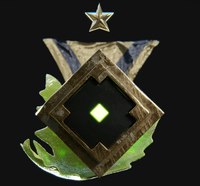
- Herald 1 (1–154)
- Herald 2 (154–308)
- Herald 3 (308–462)
- Herald 4 (462–616)
- Herald 5 (616–769)
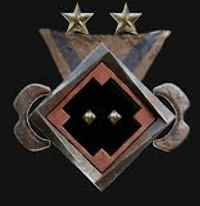
- Guardian 1 (770–924)
- Guardian 2 (924–1,078)
- Guardian 3 (1,078–1,232)
- Guardian 4 (1,232–1,386)
- Guardian 5 (1,386–1,540)
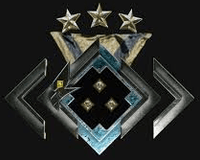
- Crusader 1 (1,540–1,694)
- Crusader 2 (1,694–1,848)
- Crusader 3 (1,848–2,002)
- Crusader 4 (2,002–2,156)
- Crusader 5 (2,156–2,310)
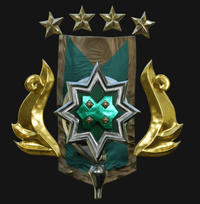
- Archon 1 (2,310–2,464)
- Archon 2 (2,464–2,618)
- Archon 3 (2,618–2,772)
- Archon 4 (2,772–2,926)
- Archon 5 (2,926–3,080)
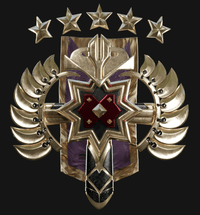
- Legend 1 (3,080–3,234)
- Legend 2 (3,234–3,388)
- Legend 3 (3,388–3,542)
- Legend 4 (3,542–3,696)
- Legend 5 (3,696–3,850)
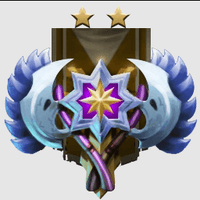
- Ancient 1 (3,850–4,004)
- Ancient 2 (4,004–4,158)
- Ancient 3 (4,158–4,312)
- Ancient 4 (4,312–4,466)
- Ancient 5 (4,466–4,620)
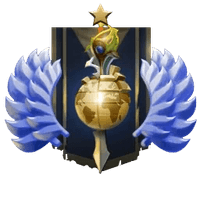
- Divine 1 (4,620–4,820)
- Divine 2 (4,820–5,020)
- Divine 3 (5,020–5,220)
- Divine 4 (5,220–5,420)
- Divine 5 (5,420–5,620)
The Immortal badges can slightly differ, as after 5,620–8,300 MMR, players go to the regional top 1000, 100, and 10. There, the best players are assigned unique numbered medals.

- Immortal (5,620-8,300 MMR)
- Immortal Regional Tops
How Does the Ranking System Work?
Now, let’s take a closer look at how the ranking system works.
Matchmaking Rating (MMR) Explained
A player’s matchmaking rating is initially determined by a series of placed matches and is then updated according to their performance. With this tool, Valve aims to create a thriving environment where both newbies and advanced players can have a good time by playing with similar-level opponents.
The system is simple yet effective. The more a player wins, the more MMR they gain, and the more they lose, the fewer points they have. The rating is then used to create balanced matches by separating players into teams of similar average MMR.
Requirements
To play ranked games in Dota 2, you need to reach account level 20 and link a valid phone number to your Steam account to prove you’re a real person. In addition to the above, you’ll also need at least 100 hours of gameplay to unlock ranked mode. While these requirements may seem harsh, especially for newcomers, it is an important part of Dota’s learning curve.
Solo vs Party Ranking
Playing as a full party against random opponents can give you an unfair advantage and make the game extremely unfun for the opposing side. To address this issue, Valve decided that when full stacks play vs. randoms, the former will get fewer MMR points for a victory (?30 vs ?20). So, if you’re looking for fast MMR, you should go for the solo queue grind.
Calibration Matches
Before receiving your initial MMR, you’ll need to play several matches for the system to estimate your capabilities. You need to play at least 10 matches to get your first Medal.
Your initial placement also determines how fast you can progress, as the higher rank you get after these 10 games, the more skilled your opponents will be later down the line. Some say that during the calibration each win will grant you twice the points you’d receive in a regular match. However, Valve has never officially confirmed this rumor.
Seasonal Changes in Ranks
To keep the Dota ranking system actually representative of the players' skills, Valve had introduced rank season rotation. Each season lasts about 6 months, and by the end of this period, you’ll have to do a new series of calibration games. You don't start from zero, as the system takes into account the rank you had in the last season, but it doesn’t mean you will get the same one. Even pro players sometimes drop to lower ranks after a series of unlucky calibration games.
Players can also force recalibration to reset their current rank and get a new one. You can only do so once per year, though.
How to Check Your MMR in Dota 2?
Well, the process is as intuitive as it gets. Launch the game and click the History tab in your profile.

In the upper right corner of the History menu, you will find your MMR.

In the provided example, it is 2,229 MMR (Crusader 5).
Dota 2 Rank Distribution
With around 600,000 active players, Dota 2 MMR distribution is a very fluid thing. This is especially true for the Immortal bracket, which is very hard to get into and very easy to be thrown out of.
Overview of Rank Percentiles
Rank | Percentage of Players, % | Estimated Number of Players (600,000 total) |
Herald | 7.34 | 44,040 |
Guardian | 15.68 | 94,080 |
Crusader | 22.49 | 134,940 |
Archon | 22.75 | 136,500 |
Legend | 16.31 | 97,860 |
Ancient | 9.81 | 58,860 |
Divine | 5.62 | 33,720 |
Immortal | 0.1 | 600 |
It’s hard to say for sure what Dota 2 rank in MMR is the most common one, as there are 4 brackets with about 100k players. Interestingly, the lowest rank (Herald) and the second highest one (Divine) are pretty close in terms of player numbers. According to the community data, the most played bracket is Archon, comprising 22.75% (136,500k) of the total player base.
How to Increase Dota 2 Ranks in MMR?
Finally, here are some general tips on how to climb up MMR ladders.
Learn Specific Mechanics
To improve your Dota 2 skills, try mastering the specific mechanics of your favorite heroes. While you’ll likely get pretty familiar with last-hitting over the required 100 hours of pre-ranked gameplay, controlling neutrals and using their abilities when playing on Chen will prove far more challenging. This will not only improve your skills playing the characters who use these mechanics but also give you a good idea of how to counter them.
Master Core and Support Roles
Each of Dota’s 5 positions (3 core and 2 support) comes with its own set of responsibilities. If you’re new to the game, find 1–2 roles you like the most and start practicing. You can find guides for any role on YouTube or dedicated websites like our own.
Communicate with Your Team
Another key to improving your rank is to practice good team communication. Dota 2 has built-in voice chat that can be toggled with a button or activated with voice detection. Even when playing solo queues, higher-rank players constantly analyze the map and pass the info to teammates using voice chat. It is often not just the personal skill that determines who wins the game, but coordinated moves and map awareness.
Play in a Team
Consistency is also crucial to progress through the Dota 2 ranking MMR system. Playing with a team of friends definitely helps, even though you'll get fewer points than for playing solo. If you’re new to the game, you will get to understand how roles fit, how core + support combinations work, etc. Besides, good team vibes will help you stay sane while grinding.
Conclusion
The ranking system in Dota 2 is a classic example of its kind, dating back over a decade. Dota ranks help the game pair players with the opponents of their level, ensuring the matches stay interesting no matter how good you are. The game currently features eight ranks, each with a 1–5 tier system, and the higher ranks like Immortal are reserved for the top players. Want to climb the ranks faster? Stay consistent, communicate well, and master your role to reach the top.


